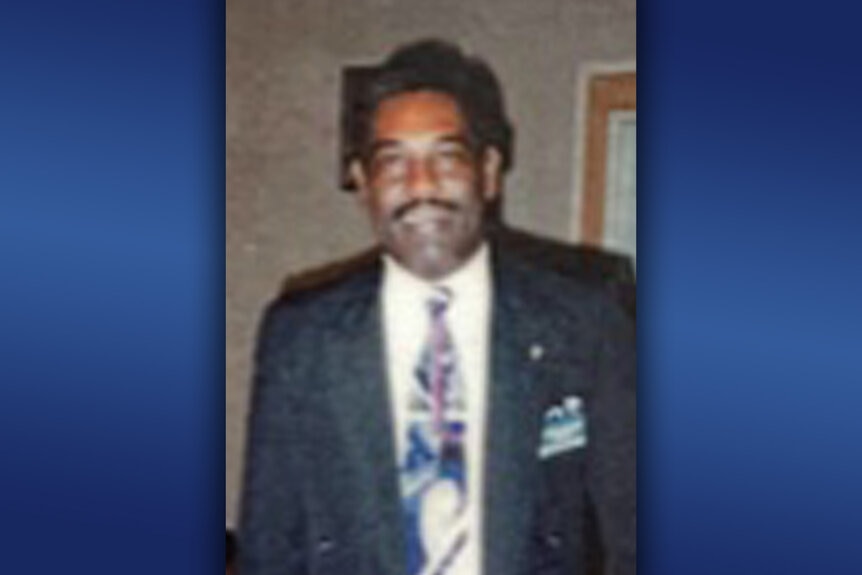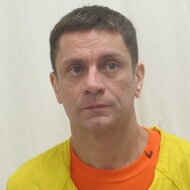Create a free profile to get unlimited access to exclusive videos, breaking news, sweepstakes, and more!
3 Businessmen Shot In the "Back of Their Heads" In Atlanta Hilton Hotel Room
As police worked the triple homicide, they discovered a fourth victim had been killed the same way days earlier at another inn.
While visiting Atlanta for work and a pro football game, three businessmen sharing a room at the Hilton Hotel were brutally killed.
On October 18, 1998, the shooting victims were discovered at 9 a.m. by a housekeeper who alerted security, according to The Real Murders of Atlanta, airing Fridays at 9/8c on Oxygen.
“They were lying down shoulder-to-shoulder in their underwear,” said Clinton Rucker, former chief assistant D.A. for Fulton County. “There appeared to be obvious huge gunshot wounds to the back of their heads.”
Police were unable to collect DNA or fingerprint evidence at the scene, but they recovered shell casings fired from a .45-caliber handgun.
RELATED: Atlanta Woman's Own Daughter Implicates Her When Interrogated About Stepdad's Brutal Murder
Triple homicide sends shockwaves through Atlanta
Though the men’s wallets were missing, they were identified through the hotel registry as Gerrold Shropshire, 50, of Altamonte Springs, Fla.; Ronald Gutkowski, 51, of Leesburg, Fla., and Phillip Dover, 31, of Gainesville, Ga.
To get a timeline of the murders, investigators requested a record of hotel key card swipes. They found that the last entry to the crime scene was 2 a.m.
Police interviewed hotel guests. One reported hearing gunshots at 2:30 a.m. but didn’t report it at the time. The witness statement pinpointed the time of the slayings.
Detectives turned to the hotel’s network of interior and exterior security cameras. “The video surveillance tape could be the most important piece of evidence for solving this case,” said Rucker.
However, it would take time to gather the footage due to the state of technology in 1998.
While awaiting the reports, investigators reached out to the victims’ families. Shropshire was in the trucking business and had no enemies, according to his daughter Kymberli Shropshire. “He always had friends everywhere," she said.
Gutkowski was Shropshire’s coworker and a family man active in his church.
Dover was an executive whose brother, Clayton, described him as “a people person who got along with everybody.”
Police searched for other potential motives for the execution-style slayings of the three respected men.
As the case progressed, they determined that Dover had secured tickets to see the Atlanta Falcons play the New Orleans Saints on October 18, according to Keith Meadows, a former sergeant with the Atlanta P.D. homicide unit.
The tickets were not in the hotel room, presumably stolen by the killer. By the time police determined the seat locations at the Georgia Dome, the game was over. But officials confirmed that the tickets had been used.
Investigators’ efforts to use the stadium’s security camera footage to see who was in the victims’ seats led to a dead end.
By this time, news of the triple homicide had spread, which sent shockwaves across Atlanta.
“You should be safe in your high-end hotel,” said Kymberli Shropshire. "And that certainly wasn’t the case.”
Hotel security footage provides clues to a suspect
The slayings quickly became a blight on the city’s reputation. “We were attempting to solve this case as fast and as efficiently as we possibly could,” said Meadows.
Two days into the investigation, the hotel surveillance footage from the night of the murders came in.
The tapes showed Dover standing at the elevator to go up to his room just minutes after 2 a.m. He appeared, said Rucker, "to be having a conversation with an unidentified Black male wearing a baseball cap."
“After they are done conversing, they enter into the elevator together,” said Shaunya Chavis, an Atlanta television journalist.
An hour later, the same man in the baseball cap was seen leaving the hotel carrying a suitcase, a garment bag, and an ice cooler, investigators said.
The footage provided a lead, but images were blurry. Police reached out to NASA to have the footage enhanced to improve the odds of determining the suspect’s identity, according to The Real Murders of Atlanta.
Unfortunately, after several attempts, police were unable to make a positive identification from the analysis done at NASA.
Atlanta police widen net and catch a break
As the city of Atlanta reeled, pressure intensified for authorities to catch the killer. After several days of coming up empty in Atlanta area, the team of investigators cast a wider net.
They reached out to police departments nationwide. They asked other agencies to be on the lookout for a man who matched the suspect’s description, anyone with the victims’ personal items, or anybody with a .45-caliber handgun.
During the Halloween weekend, police got a big break. They received a call from the Shelby County Sheriff's Department in Memphis, Tennessee. A 38-year-old Black male had been pulled over for speeding. The driver indicated he had a .45-caliber pistol in the glove compartment.
The Memphis police officer believed the driver resembled the man in the Hilton security footage. When he searched the vehicle, he found the three Hilton Hotel victims’ licenses and credit cards.
Timothy Carl Dawson becomes the key suspect
The driver of the vehicle was identified as Timothy Carl Dawson, who had a rap sheet for violent crimes. He was transferred from Memphis to Atlanta, where he was questioned by police. He denied having anything to do with the murders.
Detectives focused on evidence collected from the crime scene. Ballistics findings showed that the recovered gun matched the casings in the hotel room. In addition, DNA from the three victims was found in the muzzle of Dawson’s gun.
RELATED: Atlanta Woman Killed By ‘Death Squad’ While Calling 911 To Report Home Invasion
Gerrold Shropshire’s blood was also on the cap Dawson was wearing. The DNA, the gun, the hat “overwhelmingly puts him at the crime scene at the time of the murder,” said Brett Zimbrick, a former homicide investigator for the Atlanta Police Department.
A fourth Atlanta murder appears linked to Timothy Dawson
Investigators questioned whether Dawson could have murdered before. They learned that 19-year-old Ladaris Hawkins had been killed, robbed, and left in his underwear at a hotel in College Park on October 15.
A ballistics test revealed that the same gun was used in all four murders. Timothy Dawson was subsequently charged with four counts of murder as well as armed robbery and aggravated assault.
Dawson’s trial for the four murders began in 2000. Prosecutors believed they had a strong case but after the jury deliberated, the foreperson informed the judge that they couldn’t reach a consensus, according to Chavis.
The judge ordered the jury to deliberate further. Three days later, they returned with a guilty verdict.
Dawson’s defense team argued against the death penalty because of their client’s “mental defect,” said Rucker.
Dawson was sentenced to life in prison without the chance for parole.
To learn more about the case, watch The Real Murders of Atlanta, airing Fridays at 9/8c on Oxygen.




































